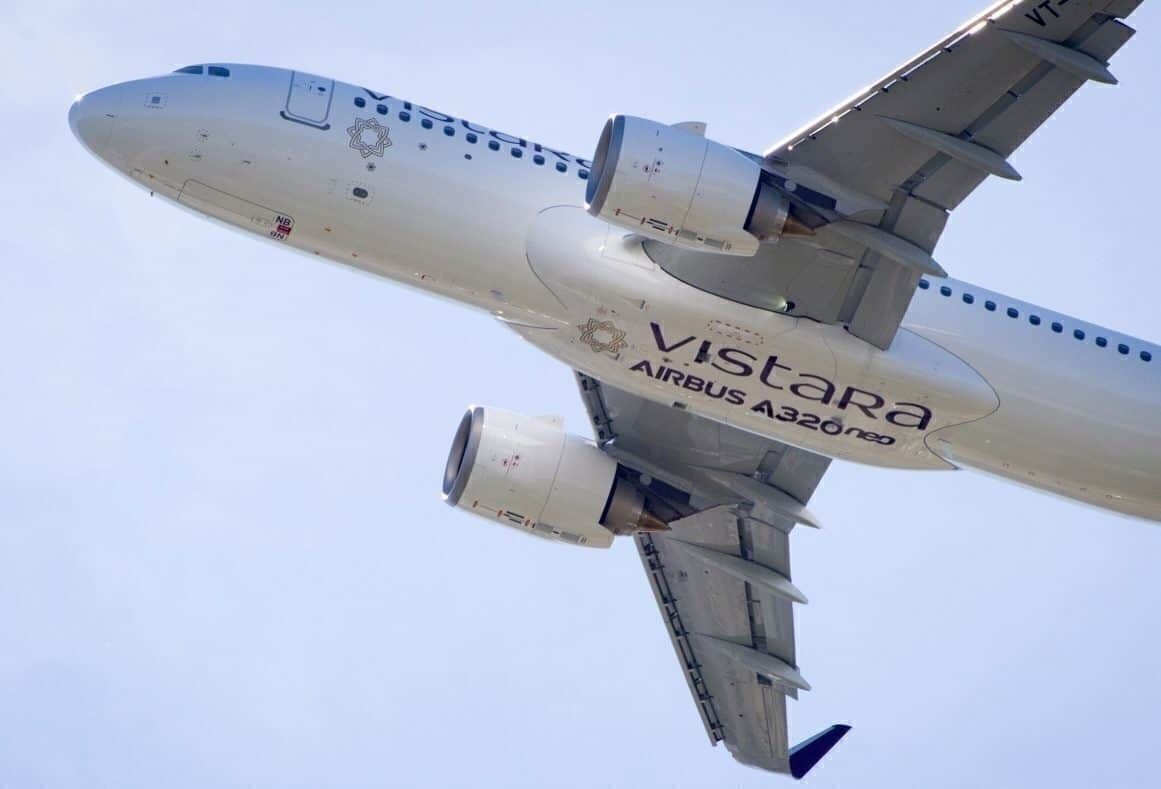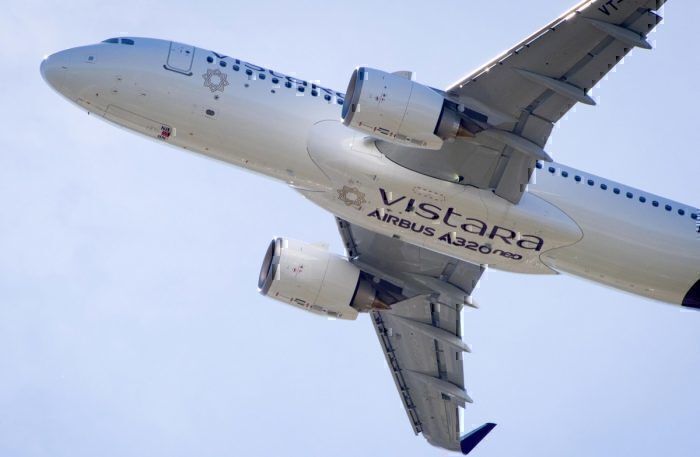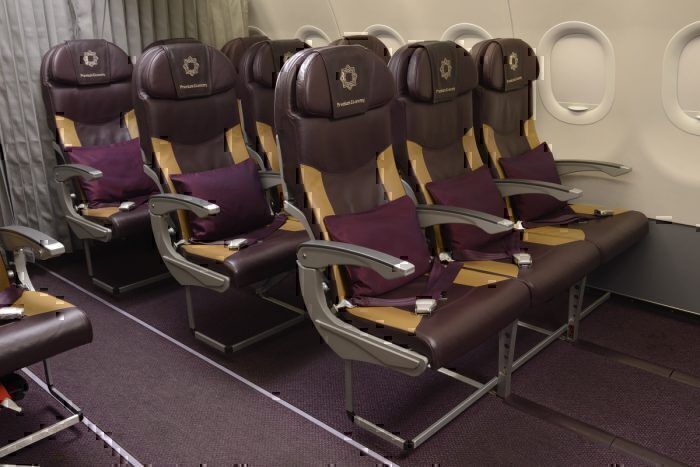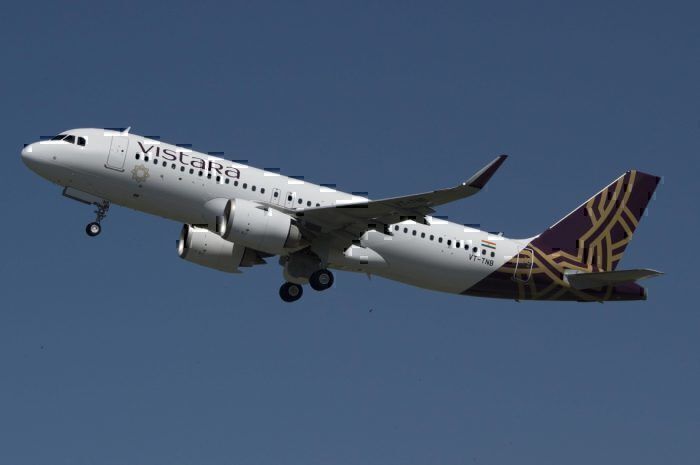Vistara is to drop business class and premium economy seating from some of its aircraft. This is according to a report by the CAPA Centre for Aviation and an article by Business Standard. Vistara and its fleet of narrowbody 737s and A320s have differentiated itself from the low-cost carrier competition by aiming to be a premium brand. Could this be the start of even more change?
The new configuration
According to Business Standard, sources familiar with Vistara’s fleet planning say that the airline is asking Airbus to configure 10 of its on-order Airbus A320-family aircraft in all-economy configurations. This is out of a total order of 50. This means that, instead of having three classes (business, premium economy, and economy) and 164 seats, the single-class, all-economy configuration will have 180 seats.
Sources go on to say that Vistara will operate these aircraft on routes between Tier B and Tier C cities. This is because there is a lower demand for premium class seating on these routes. There are no reported changes, however, to Vistara's level of service. Therefore, onboard meals will continue in all aircraft.
Vistara confirms that there is currently one of these all-economy aircraft in its fleet of 39 in this configuration. In fact, this particular aircraft was acquired from grounded Icelandic carrier WOW Air.
What's driving this change?
Reports say that this hybrid strategy is the result of the Indian government's rules that force the airline to operate certain regional routes - even if they aren't profitable. The policy governing this is the Indian civil aviation authority's Route Dispersal Guidelines (RDG).
As is explained on an Indian government ministry's website, domestic routes are divided into three categories: I, II and III. Category I contains the busiest and therefore most profitable routes. Examples of these routes are:
- Calcutta-Delhi
- Mumbai-Calcutta
- Calcutta-Bangalore
- Mumbai-Delhi
Category II routes are in the Northeastern region, Jammu & Kashmir, and Lakshadweep while Category III is considered all other routes not detailed in I or III.
Set by the government, all scheduled operators must use some of their capacity to serving Category II and III routes. The percentages are set by the civil aviation authority (DGCA).
Apparently, airlines like Vistara are challenged financially to fly the more remote, lower-demand routes. On these routes, business and premium economy cabins have particularly low demand.
The challenges of having a 'hybrid fleet'
Operating an all-economy class aircraft in order to remain profitable should be good for Vistara and its bottom line. However, there are certainly risks to having a mixed fleet with different cabin configurations.
The biggest risk is a lowered flexibility in being able to move aircraft at the last minute due to operational requirements. Whether it's a cancellation or delay due to weather or unexpected maintenance, premium-class passengers would certainly be upset if they were suddenly downgraded because of an aircraft-change as their premium seats were no longer available.
On the other hand, if an all-economy plane had to be suddenly switched for an aircraft with business class, there might be a handful of lucky passengers getting an upgrade. This, of course, would not be profitable for the airline.
We reached out to Vistara for an official comment and this is what they had to say in response to our inquiry - the quote is identical to the one reported by other sources:
“Only one of our 39 aircraft in operations at present is configured in all economy class. It tends to be deployed on routes with weaker demand for front cabins or on seasonal leisure routes. We may have a few such aircraft in the future to serve these routes, however, aircraft configuration is not to be confused with business model. Service delivered across our fleet will be full-service, regardless of the configuration.” - Vistara Spokesperson
Conclusion
Based on the airline's official statement it seems that Vistara will continue to offer full-service on all routes and all aircraft, which is great news for passengers who have a little more money to spend on a more pleasant onboard experience.
Vistara has already announced plans to expand its widebody fleet, with six Boeing 787-9s scheduled to arrive in February 2020, as the carrier grows its network. We're very excited to see where things go with the airline.
Have you flown with Vistara before? Particularly on a low-demand route? Let us know how your experience was by leaving a comment!




